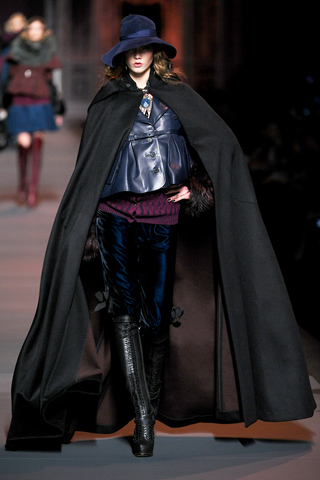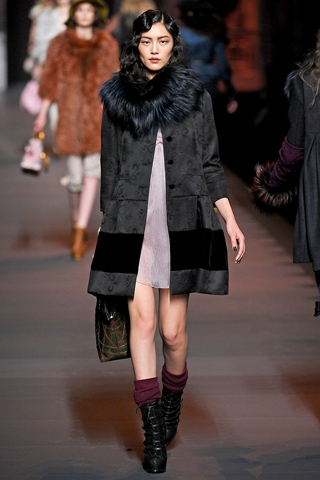My personal solution is to remove the creator from the equation and appreciate the clothes for themselves and not the unrelated ideals behind them. That said, I have to say that thus far (I have already combed through seventeen Fall 2011 collections) Christian Dior's show is my stand-out favourite.
While many other designers are pursuing a Mad Men-esque '60s look, Dior has turned the clock back to eighteenth century France. It is quite possible that I am so enamored because I have been waiting for just such a moment since I first developed an interest in fashion. For me the 18th century has always represented the most flamboyant and luxurious of historic fashion. It was the age of Marie Antoinette and the Duchess of Devonshire, two women who left an indelible mark upon the sartorial world [on that note, I recommend Evelyn Lever's Marie Antoinette: The Last Queen of France and Amanda Foreman's The Duchess, two excellent biographies]. Dior's Fall runway featured heavily-dyed luxe fabrics, jacquard patterns, silk bows, rich velvet, gauzy silk and delicate lace. Designs alluded to the unabashed opulence the mid-18th century, transitioning into the more muted romance of the late-eighteenth century's Napoleonic France, which featured the advent of the empire-waisted muslin gown (think Jane Austen). The show had drama and flair, while blending history and modernity in a tastefully grandiose ode to the glories of yesteryear. (Photos courtesy of Yannis Vlamos from style.com)










No comments:
Post a Comment